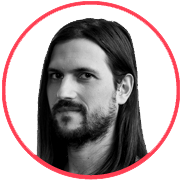Buona Fortuna: Deserted Chapels in Jorge Manes Rubio’s project

One day while I was researching some stuff online I came across a few villages in the south of Italy that had been abandoned after the Irpinia’s Earthquake in 1980. I didn’t know anything about this devastating earthquake, and I was quite surprised these places were still standing up there in the mountains. On the other hand, my friend and designer Gianluca Tesauro lives in the south of Italy, and last summer he invited me to come over for a few days to relax in the Amalfi Coast. It only made sense to spend a few days driving around the Cilento National Park and visit these villages. The title of the collection – Buona Fortuna – which means “good luck” in Italian – is rather ironic as these places have been long forgotten.
First we just drove to a place we heard of, talked to the locals, along the way you got more tips, more directions, more stories. People were quite surprised that we had so much interest in their heritage. Usually youngsters go to these abandoned places to drink a few beers and smash a few windows, but we believe these places deserve much more than that.
Even the smallest town or village in the South of Italy has a tiny church or chapel. Some of the churches that we came across were open and you could get into them at your own risk, as they could fall down at any minute. Some others, even if partially destroyed, were locked and therefore in slightly better conditions.
{
“img”: “/wp-content/uploads/2014/07/buona_slide1_01.jpg”,
“alt”: “Buona Fortuna 1”
},
{
“img”: “/wp-content/uploads/2014/07/buona_slide1_02.jpg”,
“alt”: “Buona Fortuna 2”
},
{
“img”: “/wp-content/uploads/2014/07/buona_slide1_03.jpg”,
“alt”: “Buona Fortuna 3”
},
{
“img”: “/wp-content/uploads/2014/07/buona_slide1_04.jpg”,
“alt”: “Buona Fortuna 4”
},
{
“img”: “/wp-content/uploads/2014/07/buona_slide1_05.jpg”,
“alt”: “Buona Fortuna 5”
}
I’ve never seen something like this. There was so much beauty in these churches that it was quite hard to take it all at once. I remember in one church in particular it took us 30 minutes till we started shooting. We had to take a deep breath and think about all the things that these places have witnessed. It made us feel very small, and lucky to be there at the same.
I’m not sure if I would call myself a photographer though, because photography for me is a tool to help people understand the context in which my artworks are being created. But it is true that I use photography more and more often for my exhibitions and installations. Before I didn’t really use photography for my projects, only to document what I was doing. If you want to be a photographer, it is the most important thing – taking your time to do the things that you like, to take the photographs that you really want to take, otherwise it won’t work.
It’s absolutely necessary to be connected with your past, to be able to look back and learn from that experience. My work as an artist is not about recreating the past, or reminiscing about better times. It’s very important to understand that with this project we are not asking for reconstruction or restoration of these places. We are not saying – look at these churches, what a shame, such a pity… It might be sad, but we also see an amazing opportunity to reimagine these places’ identity, and why not, their future.
There were lots of issues regarding the reconstruction of these villages, – lots of money ended up in the wrong pockets. I believe it’s important to keep these places as what they are right now instead of trying to restore them to the estate they were before. Because it is that conflict between beauty and decay that makes them contemporary and relevant for our time, what essentially makes them truly works of art.
{
“img”: “/wp-content/uploads/2014/07/buona_slide2.jpg”,
“alt”: “Buona Fortuna 6”
},
{
“img”: “/wp-content/uploads/2014/07/buona_slide2_07.jpg”,
“alt”: “Buona Fortuna 7”
},
{
“img”: “/wp-content/uploads/2014/07/buona_slide2_08.jpg”,
“alt”: “Buona Fortuna 8”
},{
“img”: “/wp-content/uploads/2014/07/buona_slide2_09.jpg”,
“alt”: “Buona Fortuna 9”
},
{
“img”: “/wp-content/uploads/2014/07/buona_slide2_10.jpg”,
“alt”: “Buona Fortuna 10”
},
{
“img”: “/wp-content/uploads/2014/07/buona_slide2_11.jpg”,
“alt”: “Buona Fortuna 11”
},
{
“img”: “/wp-content/uploads/2014/07/buona_slide2_12.jpg”,
“alt”: “Buona Fortuna 12”
},
{
“img”: “/wp-content/uploads/2014/07/buona_slide2_13.jpg”,
“alt”: “Buona Fortuna 13”
}
The first thing you notice when you would get in is a very deep sense of emptiness. People managed to break in into these churches, and they looted everything they could – all the Madonnas, all the Santos, paintings… all the relics. This feeling of emptiness is the one that inspired us to start the second part of the project. We are currently working on a collaboration with local craftsmen, creating a series of new artworks and installations that will replace these stolen icons with new fictional symbols. After 35 years, one of these churches will reopen its doors to the public again.
At the moment we are working with the photographs we have so far. We’ve created a very limited edition of prints that are available and that are helping us to finance the future project. They work really well and we are very happy with the results. When you see these large scale color prints you kind of get lost in them. You want to navigate through the shattered interiors. The photographs have kept the essence from these places, that beauty, that very thin line between the real and the unreal.
New and best




